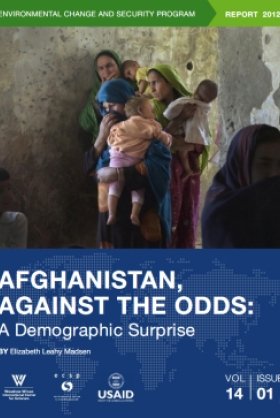Afghanistan, Against the Odds: A Demographic Surprise



Afghanistan’s first-ever nationally representative survey of demographic and health issues finds that Afghan women have an average of five children each, lower than most experts had anticipated. Their rate of modern contraceptive use is just slightly below that of women in neighboring Pakistan, where the fertility rate is 4.1 children per woman.
In this ECSP Report brief, demographer Elizabeth Leahy Madsen writes that just as Afghanistan and Pakistan’s political circumstances have become more entwined, their demographic paths are more closely parallel than we might have expected. For Afghanistan, given its myriad socioeconomic, political, cultural, and geographic challenges, this is good news. But for Pakistan, where efforts to meet family planning needs have fallen short of capacity, it is not.
Author


Environmental Change and Security Program
The Environmental Change and Security Program (ECSP) explores the connections between environmental change, health, and population dynamics and their links to conflict, human insecurity, and foreign policy. Read more


Indo-Pacific Program
The Indo-Pacific Program promotes policy debate and intellectual discussions on US interests in the Asia-Pacific as well as political, economic, security, and social issues relating to the world’s most populous and economically dynamic region. Read more

Explore More
Browse Insights & Analysis
New Directions in Demographic Security

Pakistan's Population Challenge
